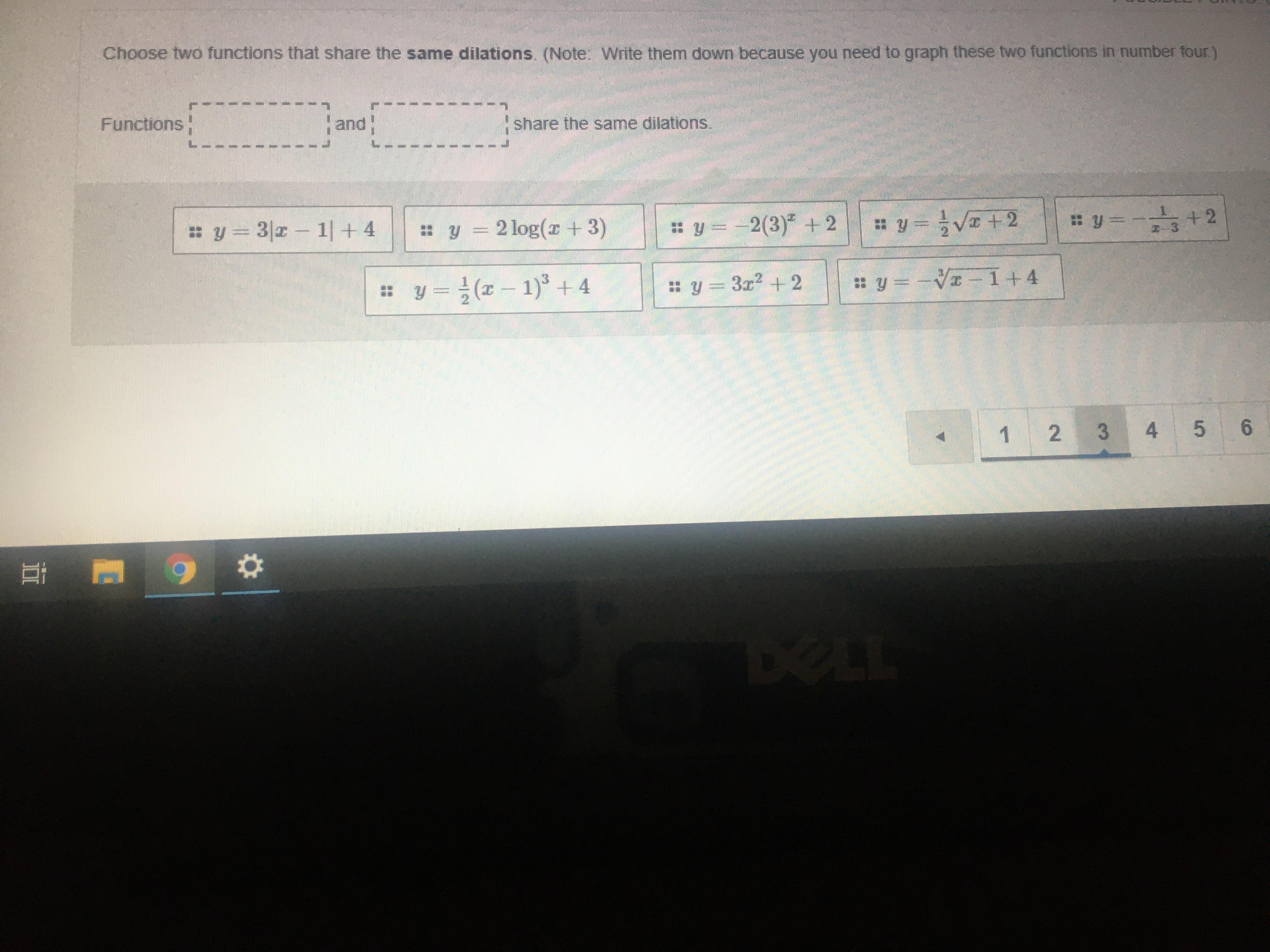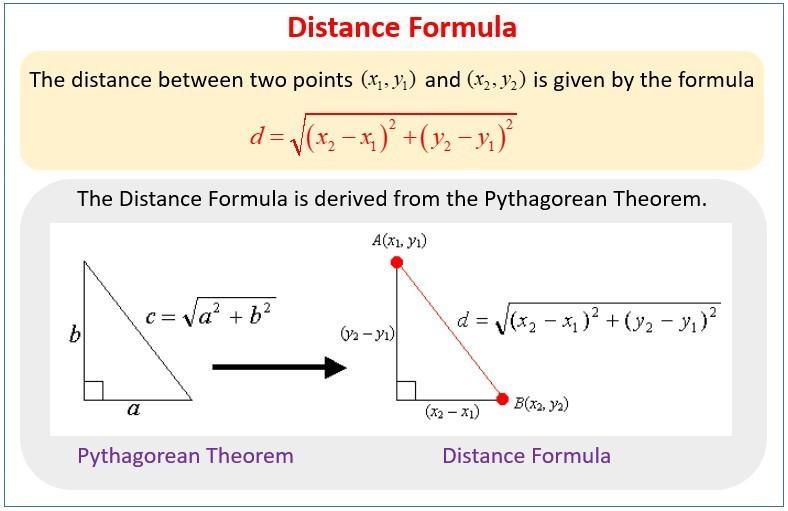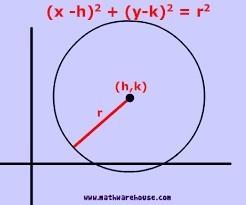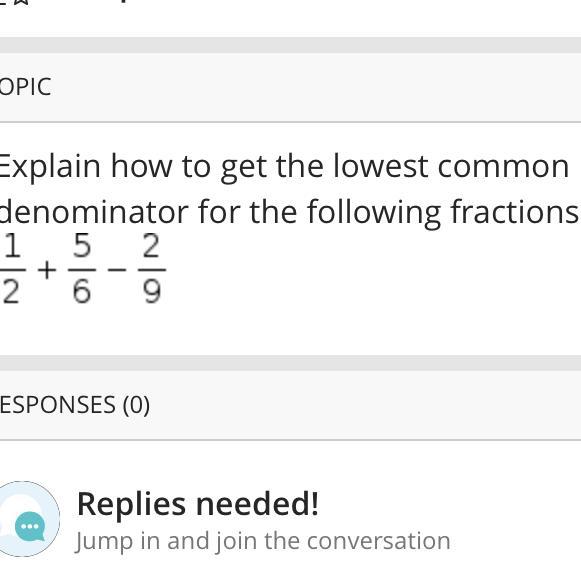Answers
The point which satisfies equation is (-2,4)
What is circle?
A circle could be a form consisting of all purposes during a plane that are at a given distance from a given point, the centre.
Main body:
The center of circle formula is also known as the general equation of a circle. In a circle, if the coordinates of the center are (h,k), r is the radius, and (x,y) is any point on the circle, then the center of circle formula is given below:
Formula of circle =
(x - h)² + (y - k)² = r²
According to question:
center of circle = (2,1)
diameter of circle = 10 units
radius = 5 units
equation of circle ⇒
(x - 2)² + (y - 1)² = 25
for a point to lie on circle , it need to satisfy the equation of circle:
A) (1,-3)
⇒(1 - 2)² + (3 - 1)²
⇒(-1)² +2²
⇒5
so it does not lie on circle.
B) (-2,4)
⇒(-2 - 2)² + (4 - 1)²
⇒-4²+3²
⇒ 25
so, it satisfies the equation.
hence, the point which satisfies equation is (-2,4)
to know more about conics , visit:
https://brainly.com/question/20195892
#SPJ1
Related Questions
The length of a rectangle is shown below:
If the area of the rectangle to be drawn is 12 square units, where should points C and D be located, if they lie vertically below the line that connects B and A, to make this rectangle? (1 point)
A. C(−3, −2), D(1, −2)
B. C(−3, −1), D(1, −1)
C. C(−3, −4), D(1, −4)
D. C(−3, −5), D(1, −5)

Answers
Answer:
A - C(-3, -2), D(1, -2)
Step-by-step explanation:
Please help I don’t understand

Answers
Answer:
the 1 one and the 4 one
Step-by-step explanation:
Find an equation for the circle that has center
(−5, 4)
and passes through the point
(2, −3).
Answers
Answer:
\((x+5)^2 + (y-4)^2 = 98\)
Step-by-step explanation:
The radius is
\(\sqrt{(-5-2)^2 + (4-(-3))^2}=\sqrt{98}\)
So, the equation is
\((x+5)^2 + (y-4)^2 = 98\)


Reflectional Symmetry
Instructions: If the following figures have
reflectional symmetry, determine the
number of lines of symmetry.
Lines of Symmetry:

Answers
The figure has a rotational symmetry and the number of lines of symmetry is 3
How to determine the rotational symmetry?The given figure is an equilateral triangle.
An equilateral triangle has 3 equal sides and 3 equal angles.
This means that it has a rotational symmetry and the number of lines of symmetry is 3.
The angle of rotational symmetry is calculated as:
Angle = 180/3
Evaluate
Angle = 60
Hence, the angle of rotational symmetry is 60
Read more about rotational symmetry at:
https://brainly.com/question/4228574
#SPJ1
hmm... i wonder what's 1+1 =
Answers
Answer:
2
Step-by-step explanation:
1+1 = 2
A number less than six
Answers
HELPPPP ASAPPPPPPPPPPPPPP!!!!!!!!

Answers
Answer:
1/2 plus 5/6 would equal 8/6 cause six is the lowest denominator so then you times 8/6 by 3 and the 2/9 by 2 and that would give you 24/18 and 4/18 and you subtract them together to 20/18 or 1 2/18
Step-by-step explanation:
1/2 plus 5/6 would equal 8/6 cause six is the lowest denominator so then you times 8/6 by 3 and the 2/9 by 2 and that would give you 24/18 and 4/18 and you subtract them together to 20/18 or 1 2/18
1/2 = 3/6
5/6 + 3/6 = 8/6
8/6 x 3 = 24/18
2/9 x 2 = 4/18
24/ 18 - 4/18 = 20/18 or 1 and 2/18
The side of a triangle are in the ratio 4:4:3 what kind of triangle is it (b) calculate the smallest angle of the triangle to the nearest degree
Answers
The smallest angle of the equilateral triangle is 60 degrees
If the sides of a triangle are in the ratio 4:4:3, it implies that the lengths of the sides are proportional.
To determine the type of triangle, we examine the side lengths. Since all three sides are equal in length, we have an equilateral triangle.
For an equilateral triangle, all angles are equal. To calculate the smallest angle, we divide the total sum of angles in a triangle (180 degrees) by the number of angles, which is 3:
Smallest angle \(= \frac{180}{3} = 60\)\) degrees.
Therefore, the smallest angle of the equilateral triangle is 60 degrees (to the nearest degree).
For more questions on equilateral triangle:
https://brainly.com/question/17264112
#SPJ8
6 minutes 20 seconds into seconds.
Answers
Answer:
380 seconds
Step-by-step explanation:
Convert 6 minutes to seconds by multiplying 6 times 60, because there are 60 seconds per minute.
6 x 60 = 360
Now add the 20 seconds.
360 + 20 = 380
6 minutes and 20 seconds are equal to 380 seconds.
find the slope and y-intercept.
Answers
The slope and the y-intercept of the line y = 4x + 5 are given as follows:
Slope of 4.y-intercept of 4.How to define a linear function?The slope-intercept equation for a linear function is presented as follows:
y = mx + b
The coefficients m and b represent the slope and the intercept, respectively, and are explained as follows:
m represents the slope of the function, which is by how much the dependent variable y increases or decreases when the independent variable x is added by one.b represents the y-intercept of the function, representing the numeric value of the function when the input variable x has a value of 0. On a graph, the intercept is given by the value of y at which the graph crosses or touches the y-axis.The function for this problem is given as follows:
y = 4x + 5.
Hence the slope and the intercept are given as follows:
m = 4.b = 5.Missing InformationThe problem asks for the slope and the intercept of y = 4x + 5.
More can be learned about linear functions at https://brainly.com/question/15602982
#SPJ1
ILL MARK BRAINLIST!!!

Answers
Answer:
its 2
Step-by-step explanation:
need help with this ASAP
!!!!!!!!!!!!!!!!!!!!!!!!

Answers
The fence in dead center is about 399 feet from the third base.
What is the Pythagorean Theorem?The Pythagorean Theorem states that in the case of a right triangle, the square of the length of the hypotenuse, which is the longest side, is equals to the sum of the squares of the lengths of the other two sides.
Hence the equation for the theorem is given as follows:
c² = a² + b².
In which:
c > a and c > b is the length of the hypotenuse.a and b are the lengths of the other two sides (the legs) of the right-angled triangle.For the triangle in this problem, we have that:
The sides are d ft and 90 ft.The hypotenuse is of 409 ft.Hence the distance is obtained as follows:
d² + 90² = 409²
\(d = \sqrt{409^2 - 90^2}\)
d = 399 ft.
More can be learned about the Pythagorean Theorem at brainly.com/question/30203256
#SPJ1
1. To measure the resting heart rate of an animal biologist use the function h(m) = 530m-C), where h
is resting heart rate in beats per minute, given the mass m in pounds.
Part A: What is a feasible domain for the function him?
Answers
Answer:
Step-by-step explanation:
In mathematics, the domain or set of departure of a function is the set into which all of the input of the function is constrained to fall. It is the set X in the notation f: X → Y. Since a function is defined on its entire domain, its domain coincides with its domain of definition, the subset of the domain for which the function associates an image. However this coincidence is no longer true for a partial function since the domain of definition of a partial function can be a proper subset of the domain.
The area of an equilateral triangle is decreasing at a rate of 3 cm2/min. Find the rate (in centimeters per minute) at which the length of a side is decreasing when the area of the triangle is 100 cm2.
Answers
The rate at which the length of a side is decreasing when the area of the triangle is 100 cm² is equal to -0.227 centimeters per minute.
What is rate of change?Rate of change is a type of function that describes the average rate at which a quantity either decreases or increases with respect to another quantity.
How to calculate the area of an equilateral triangle?Mathematically, the area of an equilateral triangle can be calculated by using this formula;
A = (√3/4)s²
Where:
A represents the area of an equilateral triangle.s represents the side length of an equilateral triangle.Next, we would determine the side length of a square by making s the subject of formula as follows:
s = (√4A)/√3
s = (√4 × 100)/√3
Side length, s = 15.20
Note: The rate of change (dA/dt) is negative because it is decreasing.
By applying chain rule of differentiation, the rate of change (dA/dt) in area of this equilateral triangle with respect to time is given by:
dA/dt = (√3/4)(2s)ds/dt
dA/dt = (√3/4) × (2 × 15.20) × -3
dA/dt = -0.227 centimeters per minute.
Read more on rate here: brainly.com/question/15648128
#SPJ1
-9r+10r i have one more pls help me
Answers
Answer:
r
Step-by-step explanation:
10r - 9r = r
Find the median of each set of data
Answers
Answer:
sorry, I think u got yr question incomplete.
stay safe healthy and happy.To find the median:
- Arrange the data points from smallest to largest.
- If the number of data points is odd, the median is the middle data point in the list.
- If the number of data points is even, the median is the average of the two middle data points in the list.
please help ‼️‼️‼️ Due soon

Answers
Finding the tangent of angle E

Answers
Answer:
tan(E) =\(\sqrt{3\\}\)
Step-by-step explanation:
Given: ED = 4\(\sqrt{6}\) and CD = 6\(\sqrt{2\\}\)
Step 1 : Find CE
ED² = CE² + CD²
(4√6)² = (CE)² + (6√2)²
96 = CE² + 72
24 = CE²
CE = 2√6
Step 2 : Find ∠E using side lengths
Based on our leg lengths : 6√2 & 2√6 , we can conclude that this is a
30-60-90 triangle (the sqaures are opposites yk)
Because 6√2 is the larger leg, and ∠E is opp side of CD,
∠E = 60
From there all you do is find the tangent with a calculator "tan(60)"
which comparison does the ratio 20:21 represent?
Answers
PLEASE HELP WILL GIVE BRAINLIEST!!!!!!!!!!!!!!!!!!!!!!!!


Answers
Answer:
The notation Σ-2 (3η + 5) is incorrect for representing the arithmetic series 8 + 11+ ... + 29.
The correct notation for the arithmetic series 8 + 11 + ... + 29 should be:
Σ_{i=1}^{11} (6i + 2)
The series has 11 terms, and each term can be found by adding 3 to the previous term, starting with the first term 8. Therefore, the general form of the series is 6i + 2, where i represents the index of the term in the series.
In contrast, the notation Σ-2 (3η + 5) appears to have multiple errors. The use of a negative index (-2) is not valid, as the index should start from 1 or 0. Also, the use of the Greek letter eta (η) instead of i as the index variable is unconventional and likely to cause confusion. Finally, the expression inside the parentheses does not appear to correspond to the terms of the arithmetic series.
The correct notation for the arithmetic series 8 + 11 + ... + 29 should be:
Σ_{i=1}^{11} (6i + 2)
To explain the error in the given notation Σ-2 (3η + 5), we can break it down as follows:
The use of a negative index (-2) is incorrect. The index of summation should always be a non-negative integer.
The use of the Greek letter eta (η) instead of i as the index variable is unconventional and may cause confusion or errors.
The expression inside the parentheses, 3η + 5, does not represent the terms of the arithmetic series. In particular, it does not involve the index variable i or the common difference 3.
Therefore, the correct notation for the given arithmetic series is Σ_{i=1}^{11} (6i + 2).
a/b - c + d if a = 7/8, b= -7/16, c= 0.8 and d= 1/4 write your answer as a mixed number in simplest form? help me please
Answers
a/b - c + d = (7/8) / (-7/16) - 0.8 + 1/4
We can simplify the first term by dividing the numerator by the denominator and multiplying by the reciprocal:
(7/8) / (-7/16) = (7/8) * (-16/7) = -2
Substituting this value, along with the values of c and d, we get:
a/b - c + d = -2 - 0.8 + 1/4
Combining the constant terms, we get:
a/b - c + d = -2.8 + 1/4
To express this as a mixed number in simplest form, we first convert the decimal to a fraction by multiplying both the numerator and denominator by 100:
-2.8 + 1/4 = -280/100 + 25/100
Combining these fractions, we get:
-280/100 + 25/100 = -255/100
To express this as a mixed number, we divide the numerator by the denominator to get the whole number part, and express the remainder as a fraction of the denominator:
-255/100 = -2 55/100 = -2 11/20
Therefore, the answer in mixed number form is -2 11/20.
Factor the polynomial and use the factored form to find the zeros. (Enter your answers as a comma-separated list. Enter all answers including repetitions.)
P(x) = x3 − 2x2 − 15x
x =
Answers
Answer:
-3, 0, 5
Step-by-step explanation:
You want the zeros of P(x) = x³ − 2x² − 15x using the factored form.
Factored formWe notice right away that x is a factor of every term. Factoring that out gives us a quadratic to factor:
P(x) = x(x² -2x -15)
To factor this, we need two factors of -15 that have a sum of -2. The factors -5 and +3 have those properties. That means our factored form is ...
P(x) = x(x +3)(x -5) . . . . factored form
ZerosThis product will be zero when any of its factors is zero. Considering them one at a time, we find the zeros of P(x) to be ...
x = 0
x +3 = 0 ⇒ x = -3
x -5 = 0 ⇒ x = 5
The zeros of P(x) are -3, 0, 5.
Rena, a pharmacy technician, is looking to make a 45%
solution. She has the alligation pictured below.
A.
20
45
Which solution can be used to fill in location A?
O 35
O 40
O45
O 55
Answers
The solution that can be used to fill in location A is 45%.
In this case, Rena is trying to make a 45% solution. The alligation diagram shows two solutions with concentrations of 20% and 45%. The concentration at location A represents the concentration of the final mixture.
To determine the concentration at location A, we can visually observe the positioning of the concentrations on the diagram. The closer a concentration is to location A, the more it contributes to the final mixture.
In this case, the concentration of 45% is closer to location A than the concentration of 20%.
This means that more of the 45% solution should be used in the mixture to achieve a 45% concentration.
Therefore, the solution that can be used to fill in location A is 45%.
Learn more about Percentage here:
https://brainly.com/question/4752650
#SPJ1
A runner sprinted 103.76 yd to finish a race.
Use the table of facts to find the distance she sprinted in feet.
Round your answer to the nearest tenth.
Answers
Answer:
311.3 feet
Step-by-step explanation:
1 yard = 3 feet
Therefore, 103.76 yards = 311.28 feet (by multiplying 103.76 by 3)
Rounding to the nearest tenth gives us 311.3 feet.
Kylan had 1 ⅜ kilograms of fertilizer. He used some to fertilize a flower bed, and he only had ⅔ kilograms left. How much fertilizer was used in the flower bed?
Answers
Answer: 17/24
Step-by-step explanation:
let x be the fertilizer used in the flower bed
to find how much he has left
1 3/8 - x = 2/3
the fraction 1 3/8 we can write as 11/8
11/8 - x = 2/3
11/8 -2/3= x
we need the common denominator between 8 and 3, which is 24
33/24-16/24=17/24
Find the area of the circle use 3.14 for pie do not round your answer

Answers
Answer:
Area= 12.56 inches²Step-by-step explanation:
To find the area of a circle: A= πr²A= 3.14 × 2²A= 3.14 × 4A= 12.56 inches²\(\tt{ \green{P} \orange{s} \red{y} \blue{x} \pink{c} \purple{h} \green{i} e}\)
The area is:
12.56 in²Work/explanation:
The formula for the area of a circle is:
\(\sf{A=\pi r^2}}\)
Where
A = area
π = 3.14
r = radius
Diagram:
\(\setlength{\unitlength}{1cm}\begin{picture}(0,0)\thicklines\qbezier(2.3,0)(2.121,2.121)(0,2.3)\qbezier(-2.3,0)(-2.121,2.121)(0,2.3)\qbezier(-2.3,0)(-2.121,-2.121)(0,-2.3)\qbezier(2.3,0)(2.121,-2.121)(-0,-2.3)\put(0,0){\line(1,0){2.3}}\put(0.5,0.3){\bf\large 2\ in}\end{picture}\)
Plug in the data:
\(\sf{A = 3.14 \times 2^2}\)
\(\sf{A = 3.14 \times 4}\)
\(\sf{A = 12.56\:in^2\)
Hence, the answer is 12.56 in².I need help quick 5 mins leftyttt

Answers
Answer:
I don't know sorry :((((((((((((((((
Step-by-step explanation:
Find measure of angles C & E.
F=79⁰
D=134°

Answers
Answer:
C = 101°
E = 46°
Step-by-step explanation:
You want to know the missing angles in a trapezoid with one base angle measuring 79° and another base angle measuring 134°.
Consecutive Interior AnglesWhere a transversal crosses parallel line, the consecutive interior angles are supplementary. This means ...
∠C +∠F = 180°
∠C = 180° -79° = 101°
and ...
∠D +∠E = 180°
∠E = 180° -∠D = 180° -134° = 46°
The angle measures are ...
m∠C = 101°
m∠E = 46°
QUICK I’LL MARK YOU BRAINLIEST!!
5-142. Use the similar figures at right to answer the questions.
1. What is the scale factor?______
2. Find the lengths of the missing sides on the similar shapes below.
X=______ Y=_______ Z=_____

Answers
Answer:
Z = 22.5, Y = 81, X = 26.7
Step-by-step explanation:
Using the lengths you do know compare them to the copy, the only two lengths available that are for the same side length are 33 and 22, divide them together and you get 1.5. Thats the scale factor. Everything else you can figure out by multiplying or dividing by this scale factor.
\(Z = (15)(1.5) = 22.5\\Y = (54)(1.5) = 81\\X = (40)/(1.5) = 26.7\)
Determine whether the given value is a solution to the equation.
A. x + 15 = 10; x=5
B.m/3=11 ; m=33
C. 5n=42; x=7
Answers
5 + 15 = 20
B. Yes
33/3 (33 ÷ 3) = 11
C. No
5 × 7 = 35
Answer:
B) m/3=11 ; m=33
Step-by-step explanation:
First, I substituted in my 33 in the m in me m place. Then, divide 33 by 3 and you get 11=11, and that is a true statement. I hope this helps :)
